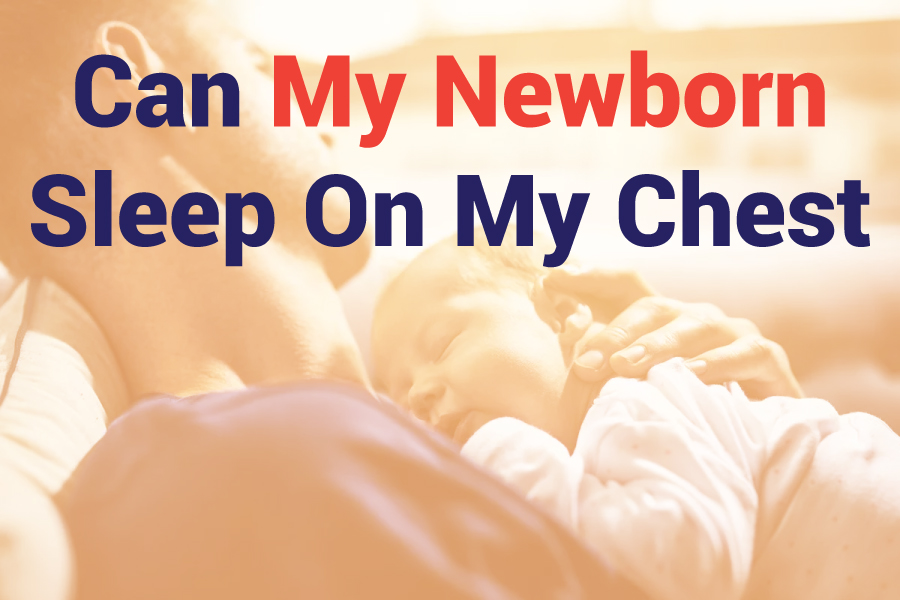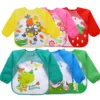One of the most tender and heartwarming experiences that every new parent would relate to is when their newborn child feels comfortable sleeping on their chest. This close physical bond provides comfort and security to your infant and strengthens the attachment between a mother and her baby. Most parents, however, will ask, “Can my newborn sleep on my chest safely?” The reason is the associated risks and benefits of its practice. Baby’s safety and well-being are of prime importance, so finding out what the guidelines and expert opinions can be is always paramount. In this article, we look at some of the benefits of letting your newborn sleep on your chest and some of the associated hazards, thereby providing you with an all-in-one guide to ensure you make informed decisions for the health and comfort of your baby.
Can My Newborn Sleep On My Chest?
Yes, your newborn can sleep on your chest, but safety rules must apply to reduce the risks. Even though this encourages bonding and soothes the baby, the above sleep method should always be done under supervision, and you are supposed to remain awake at all times. This is to help avoid occasions of SIDS or suffocation and also to avoid accidents like falling from heights. Placing the baby on a firm, flat surface in the same room after they fall asleep is much safer.
Safety Guidelines To Let Your Newborn Sleep On Your Chest
1. Importance of Supervision
If you let your newborn sleep on your chest, constant supervision is imperative. You should always be awake, and alert, so that at any moment, you can keep tabs on your baby’s breathing and position.
2. The Best Ways to Position Your Baby
Be sure that the baby is on your chest, both comfortable and secure. The safest position is stomach down or having your baby on their tummy with the head turned to one side so that both breathing passageways are open. After this, be mindful of the limbs of your baby so that they wish no pressure or discomfort.
3. Creating a Safe Sleep Environment
If you need to rest or sleep, transfer your baby to a safe sleep environment, such as a crib or bassinet. These should be placed in a room where you sleep, in proximity, yet wholly firm and flat surfaces, protective from soft bedding or pillows that can cause suffocation.
4. Recognizing the Signs of Distress
Know what normal upset signals for your baby look like. Changes to breathing patterns, unusual noises, or physical discomfort should all be immediately checked. It is being alert to these that can prevent specific hazards in the first place.
5. Expert Recommendations
Take the advice of pediatricians and sleep experts. Guidelines given by the American Academy of Pediatrics can guide you to make a safe decision. Your pediatrician will be able to advise you regarding your concerns and your baby’s needs.
The Pros And Cons Of Letting Your Newborn Sleep On Your Chest
Allowing your newborn to sleep on your chest can establish many benefits and deepen the emotional bond between a mother and her baby. Your warmth and heartbeat rhythm are very comforting to the newborn, giving them a sense of security and love. This practice may also improve the breathing patterns of your baby and help in heart rate stabilization which would lead to the well-being of your overall baby. This contact also increases the chances of successful breastfeeding and helps mothers produce more milk for their babies.
Despite these advantages, it is important to note the possible risks. Among the major concerns is the risk of accidental suffocation, mainly if you do fall asleep with your baby on your chest. The American Academy of Pediatrics performed research that proved that this is very dangerous and may result in tragic results if done when you are asleep. In addition, this way of co-sleeping increases the risk of your baby falling from your chest, hence injuring her.
On keeping your newborn safe: Enjoy some chest-to-chest time when you are awake and alert so that you can be very attentive to your baby and quickly respond if there is a problem. For nighttime sleep, consider putting the baby into a crib or bassinet on a firm, flat surface inside your room. This keeps the baby close to his or her mom but has less potential for accidents.
Another important thing to remember is the sleeping position of your baby. The safest sleeping position for your newborn is on his back, and this can lower the risk of SIDS. When they sleep on your chest, they normally tend to sleep on their stomach, and it may turn out to be dangerous if proper care is not taken.
While this can be a beautiful, bonding experience to let your newborn sleep on your chest, you have to think about safety first. Love every minute of it, yet always be vigilant and follow the recommended guidelines to keep your baby safe and healthy.
Alternative Sleep Safety
Many new parents search for safer alternatives when laying their newborns down to sleep. Some of them are:
- Room Sharing: Share the room, but not the same sleep surface.
- Swaddling: Wrap baby to provide comfort and security.
- White Noise: White noise machines are used to produce soothing womb-like background sounds.
- Regular Monitoring: Monitor your baby while they are sleeping with a baby monitor.
- Routine Checks: Check on your baby regularly to obtain reassurance that the newborn is safe and comfortable.
Alternative Viewpoints About Newborn Sleep Routines
While most parents find it more comforting to let their newborn infant sleep on their chest, some experts insist that alternative practices can provide similar gains without associated risks. Room-sharing without bed-sharing is another such practice where you would be able to maintain closeness with your baby if you put the crib or bassinet in your room. You are still able to address your baby’s needs without the dangers involved in co-sleeping on your chest.
Another perspective is that wearable baby carriers can be used for daytime naps. The inspiration of bonding with skin-to-skin contact, free hands, and securing the baby give confidence to the parents as they multitask while ensuring that the newborn feels safe and loved.
Moreover, long-term independent sleep can also be established in early life. The method is all about gradually teaching your baby to fall asleep independently in a safe sleeping environment. It requires patience and consistency to achieve more restful nights for both parents and babies.
Long-Term Impact Of Early Sleep Habits
- Setting up Healthy Sleeping Patterns: Good sleep habits learned early will stay with your child throughout their toddler and preschool years. Encourage good sleep practices to help them develop routines that support their growth and safety.
- Parental Involvement: Active parental involvement in the establishment of sleep routines is important. From setting a schedule for bedtime to creating a comfortable sleep environment, your role becomes most instrumental in setting up infant sleep habits.
- Benefit of Consistency: A consistent pattern of sleep instills a sense of security in the baby. Regularity in sleep can help in efficiently regulating their mood, enhancing cognitive function, and attaining overall health.
- Overcoming Sleep-Related Problems: Every baby is different, and sleeping issues are very common. Understanding the same with patience and dealing with them will help you and your baby sleep better.
- Seek Professional Help: Contact pediatricians and sleep coaches who will guide you through all your sleep problems. This could be a source of professional guidelines with customized solutions, implemented in a way safe for your baby.
Conclusion
While allowing your newborn to sleep on your chest has many emotional and physiological advantages, the safety issue has to be at the forefront of one’s mind. Maintaining constant supervision, observing the rules of safe sleep, and being information-equipped regarding associated risks will help you make decisions that ensure your baby’s safety. Bond with your baby during these moments when awake and alert, then transfer your baby into a safe sleep environment for nighttime rest. By following expert recommendations, safe sleep practices will ensure the health and comfort of your baby.
Frequently Asked Questions:
Is it safe for my newborn to sleep on my chest?
Yes, but only in case you are awake and on constant watch to prevent any suffocation or falls.
What are the benefits my newborn derives from sleeping on my chest?
Benefits include emotional bonding, soothing comfort, regulated breathing patterns, and enhanced breastfeeding success.
What are some dangers of having my newborn sleep on my chest?
Suffocation falls, and increased risk of SIDS if asleep and not supervised.
How can I safely do skin-to-skin contact with my baby?
Keep awake and alert; have a firm, flat surface that the baby will sleep on if you need to rest. Be sure and follow guidelines for safe sleep practices.
What are alternative safe sleep practices?
This might involve room-sharing, swaddling, white noise machines, regular monitoring, and promotion of independent sleep, which may present safer options.









